Jello
Jello craving saves man’s life
The lesson here is to not hold back if you've got a craving for a snack. That snack may save your life!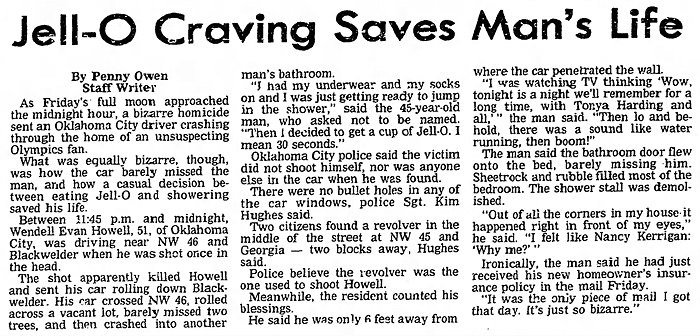
Daily Oklahoman - Feb 27, 1994
Posted By: Alex - Sat Jun 24, 2023 -
Comments (1)
Category: Accidents, Jello, 1990s
Radioprotective Blancmange
Several years ago, Russian scientists developed a recipe for a blancmange that would help protect against radiation poisoning. The perfect dessert to serve in your bunker after a nuclear war. Details from Improbable.com:You can find the article by the Russian scientists here, but it's in Russian (except for the initial abstract).
Posted By: Alex - Fri Jun 23, 2023 -
Comments (1)
Category: Food, Jello, Atomic Power and Other Nuclear Matters
National Use-Up-Your-Leftovers-In-A-Jell-O-Salad Week
This ad ran in the May 11, 1959 issue of Life magazine. So assuming that it's the week of May 11 as you read this (which it is as I post it), then I'm sure you'll want to celebrate the week by tossing whatever leftovers you might have (half a burrito, a few slices of pizza) into some jello and serving it up for dinner.
Posted By: Alex - Fri May 12, 2023 -
Comments (4)
Category: Food, Jello, Holidays, Advertising, 1950s
Jello Brainwaves
In 1974, Dr. Adrian Upton of McMaster University placed E.E.G. electrodes on a blob of lime jello and obtained positive readings. This indicated brain activity. He published his results in 1976 in the Medical Tribune.Upton was trying to demonstrate that when doctors use an E.E.G. to determine brain death, it can be difficult to obtain a perfectly flat readout, because the equipment picks up stray electrical activity from the surrounding environment. Or maybe he had discovered that jello is a sentient lifeform.
The Jell-O Gallery Museum in Le Roy, New York seems to prefer the latter conclusion. A brain-shaped jello mold on display at the museum bears the message: "A Bowl of Jell-O Gelatin and the Human Brain Have the Same Frequency of Brain Waves."

image source: Donna Goldstein, researchgate.net
More info: The Straight Dope

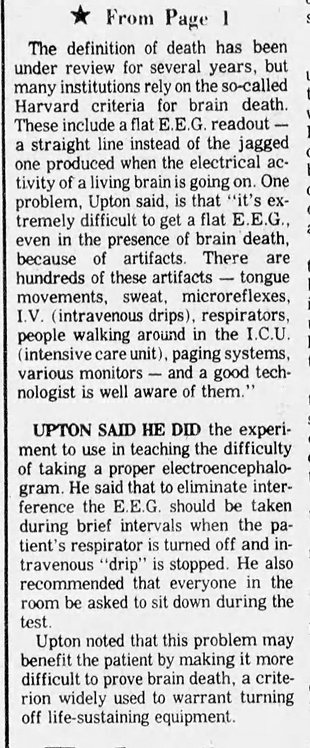
Wichita Eagle - Mar 8, 1976
Posted By: Alex - Mon Nov 15, 2021 -
Comments (7)
Category: Food, Jello, Experiments, 1970s, Brain
Aspic Aquarium
I agree with Hellmann's that this would look cool as a centerpiece at a party. But serving it with mayonnaise? Even as a mayonnaise lover, I'm not sure about that.
Posted By: Alex - Sat May 02, 2020 -
Comments (7)
Category: Mayonnaise, Jello, 1960s
Jelly-Strength Tester
Invented in 1932 by C.R. Fellers and J.A. Clague of Massachusetts State College. It's technical name is the Fellers-Clague Penetrometer.As is explained in The Complete Book on Gums and Stabilizers for Food Industry, there are two ways of testing the strength of jelly: 1) "tests in which the elastic limits (breaking strength) of the jellies are exceeded and the jelly is ruptured", or 2) "tests measuring deformation (sag) of jellies without exceeding the elastic limit."
The Fellers-Clague Penetrometer is of the first type.
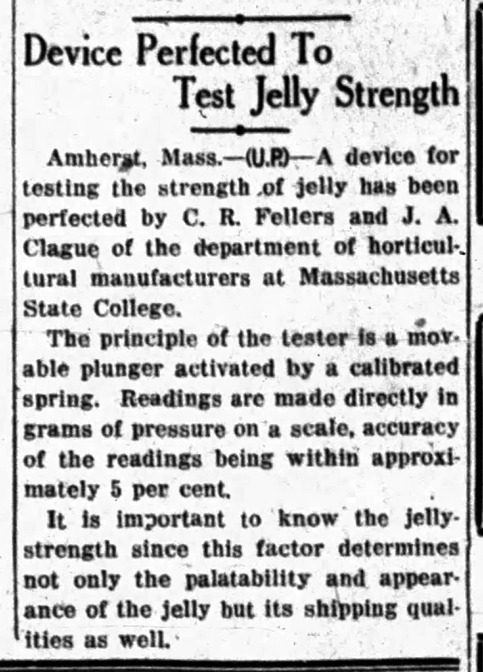
Latrobe Bulletin - July 13, 1932
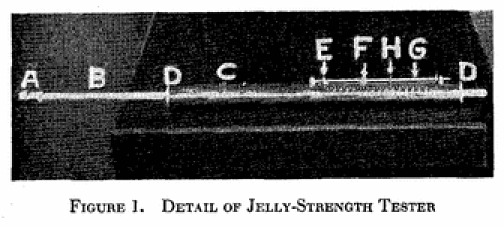
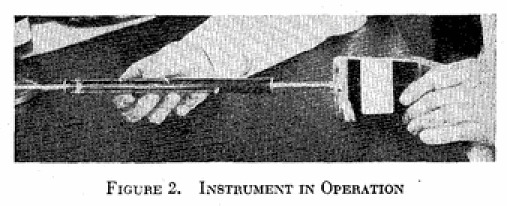
Source: Industrial and Engineering Chemistry, Analytical Edition
Posted By: Alex - Sat Mar 02, 2019 -
Comments (3)
Category: Food, Jello, Inventions, 1930s
Vegetable Jell-O
Responding to the popularity of jello salads, General Foods introduced four vegetable flavors of jello in 1964: celery, seasoned tomato, mixed vegetable, and Italian salad.But for some reason, although people liked jello salads, they didn't like vegetable-flavored jellos, and the flavors were soon discontinued.

Lubbock Avalanche Journal - July 9, 1964

source: midcenturymenu.com
Posted By: Alex - Sat May 19, 2018 -
Comments (8)
Category: Food, Jello, 1960s
Barbecue Salad
Perhaps this would taste good. But without having tried it, the idea of tomato jello just doesn't sound appealing to me.However, here's a person who's actually made the stuff!

Posted By: Alex - Tue Dec 02, 2014 -
Comments (18)
Category: Food, Jello

| Who We Are |
|---|
| Alex Boese Alex is the creator and curator of the Museum of Hoaxes. He's also the author of various weird, non-fiction, science-themed books such as Elephants on Acid and Psychedelic Apes. Paul Di Filippo Paul has been paid to put weird ideas into fictional form for over thirty years, in his career as a noted science fiction writer. He has recently begun blogging on many curious topics with three fellow writers at The Inferior 4+1. Contact Us |




